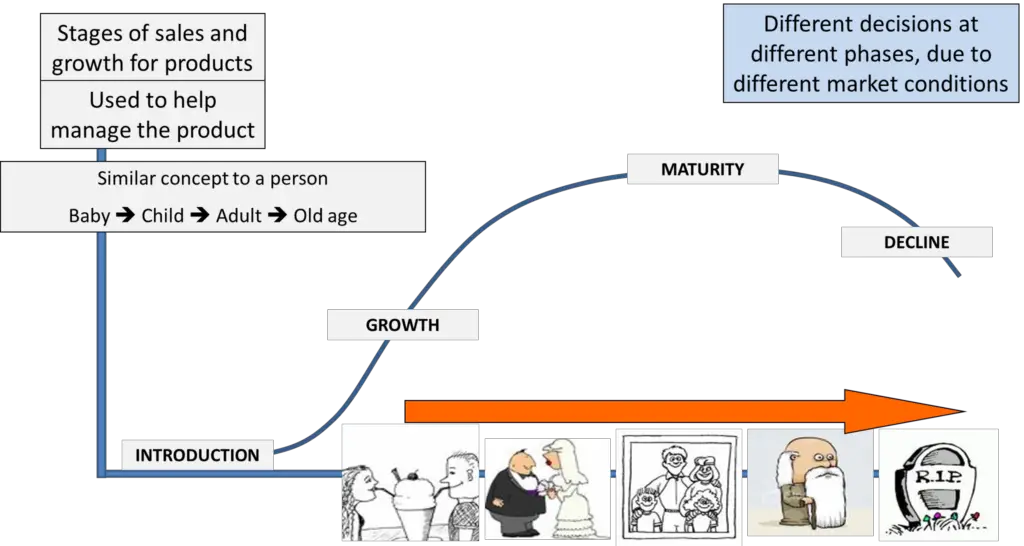Product life cycle = stages of “life”
The product life cycle (PLC) is a very common concept across all marketing textbooks. From the words “life cycle”, you should see the connection between a product and a biological life. Just as plants and animals progress through a life cycle, so does a product.
Typically, in most marketing textbooks, there are four distinct phases of the product life cycle, namely:
- Introduction phase
- Growth phase
- Maturity phase
- Decline phase
If we equate these four phases to the life cycle of a person, we would have:
- Introduction = baby/toddler
- Growth = child/teenager
- Maturity = adult
- Decline = old age
The reason why the product life cycle is important in marketing is that it provides an insight to the market conditions in which the product is operating at a specific point in time. In particular it takes into account; competitive rivalry and potential new entrants, consumers’ willingness to adopt the product, and likely retailer and supplier support, word-of-mouth support, like cost positions, and so on (as discussed in the individual PLC stage articles on this website).
By creating a stronger and clearer picture of the market conditions, the marketer is then able to create a suitable strategy based upon consumer, competitor, and broad environmental factors. It also provides the marketer with some insight into the future market conditions, which allows the development of suitable and relevant strategies based upon a challenging and changing market dynamic.
Related topics
- Introduction phase
- Growth phase
- Maturity phase
- Decline phase
Further reading

